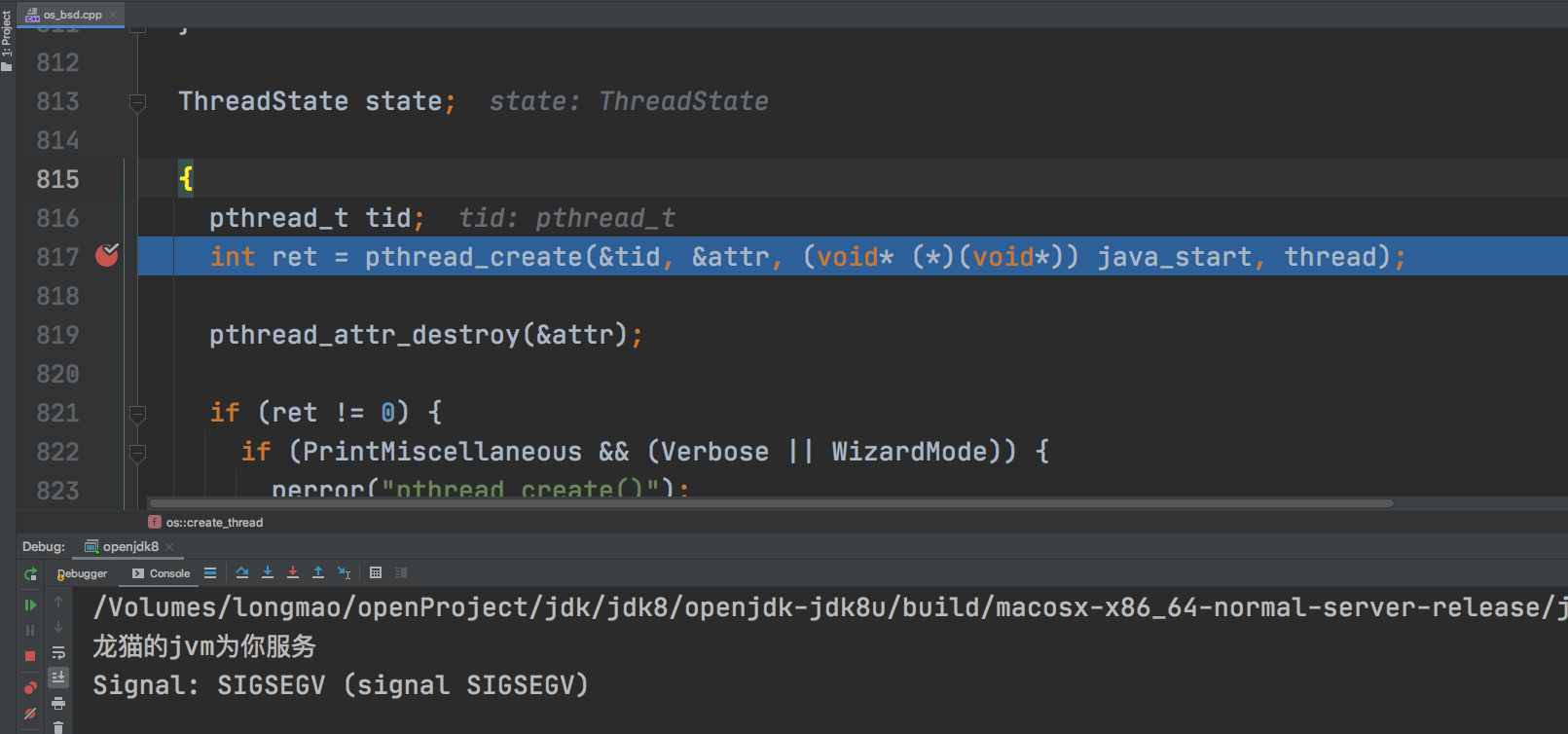创建线程demo
1 | public static void main(String[] args) throws InterruptedException { |
启动线程:start方法
1 | public synchronized void start() { |
随后调用start0()方法,这是一个jvm本地方法,最终是通过操作系统来创建线程,关键代码在 os_bsd.cpp文件(笔者用的mac调试jvm源码,Windows是os_windows.cpp)

ThreadState state; 就是定义了线程的状态(面试偶尔会问线程流转状态o(╯□╰)o,要记记),是通过c的枚举标识的:
1 | enum ThreadState { |
有没有觉得有点眼熟~ 最关键的步骤是通过操作系统函数创建系统线程:1
int ret = pthread_create(&tid, &attr, (void* (*)(void*)) java_start, thread);
pthread_create参数含义:
- 第一个参数:新创建的线程ID指向的内存单元
- 第二个参数:线程属性
- 第三个参数:新创建的线程从start_rtn函数的地址开始运行
- 第四个参数: 若上述函数需要参数,将参数放入结构中并将地址作为arg传入
